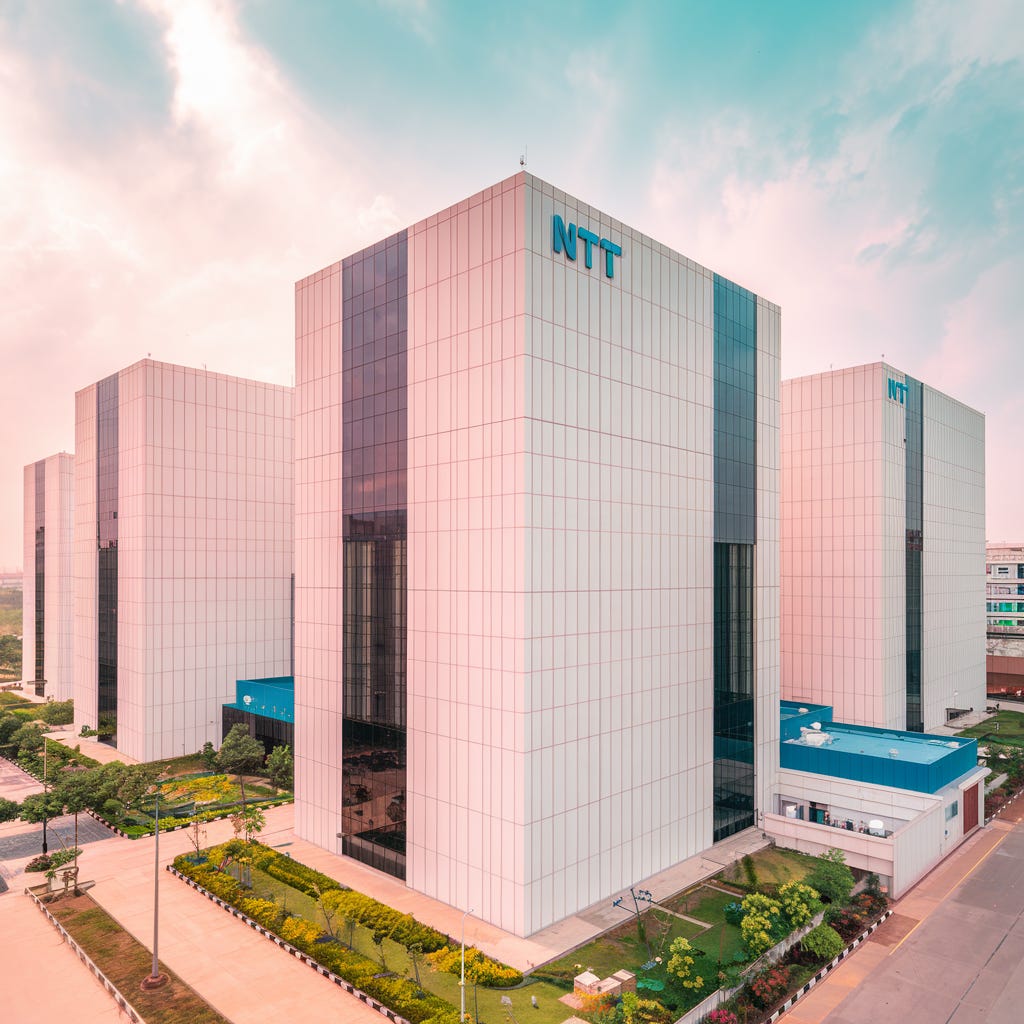What if the next capital of cloud infrastructure isn’t Ashburn, Singapore, or Frankfurt… but Navi Mumbai?
With the unveiling of its 500MW NAV2 Campus, NTT has made a definitive move—not just in India’s digital landscape, but in the balance of global AI infrastructure.
This isn’t just a hyperscale data center.
It’s a strategic blueprint.
From Compute to Control
NTT’s NAV2 Campus represents the largest single-building data center facility in India, delivering:
500MW of facility power
336MW of IT load
AI-grade infrastructure with Liquid Immersion Cooling (LIC) and Direct Contact Liquid Cooling (DCLC)
Seismic dampers for resilience
100% renewable energy targets
Redundant, multi-zone capability across Mumbai
That’s just the infrastructure layer.
NTT is also layering in:
Its MIST subsea cable (8,100 km, 200+ Tbps, ready by June 2025)
Its All-Photonics Network (IOWN) for high-throughput, low-latency AI data flow
A fully interconnected availability triangle across Mumbai’s metro region
This is what we’d call “infrastructure sovereignty.”
Not merely presence. Not colocation. Not leasing.
But control.
Mumbai’s Availability Triangle
NTT’s Mumbai strategy centers on three massive campuses:
Chandivali: Planned for 250MW
Mahape (NAV1): Up to 150MW
Airoli (NAV2): Targeting 500MW
Together, these create a cloud-native availability triangle, interconnected via NTT’s Data Center Interconnect (DCI) fabric.
Why does this matter?
Because it allows enterprises and hyperscalers to:
Build multi-zone cloud architectures within a single metro
Achieve low-latency, high-resiliency cloud deployments
Keep workloads in-country, aligned with data sovereignty mandates
It’s not just smart infrastructure.
It’s strategic resilience.
Cable, Cooling, and Capital: A Full-Stack Play
NAV2 isn’t just about real estate and racks. NTT is executing a full-stack play:
1. Cables:
The MIST cable (connecting India directly to Singapore, Malaysia, and Thailand) is India’s digital silk road. At 200+ Tbps, it will provide global connectivity at hyperscale speeds and bandwidth.
2. Cooling:
LIC and DCLC aren’t just buzzwords, they’re AI enablers. These advanced thermal systems support higher rack densities critical for GPU-heavy workloads like LLM training and inference.
3. Capital:
NTT isn’t chasing capital. It’s deploying it, with long-term commitments and full vertical integration. Its ability to self-develop power, cooling, interconnect, and compute makes it resilient in ways many U.S. REITs and hyperscalers envy.
What This Means for the Global Digital Order
Let’s zoom out.
Most hyperscalers in India operate via colocation or land-leasing models. They bring their cloud services but depend on third-party operators for real estate and energy.
NTT is taking the opposite approach:
Owning the land
Building the facility
Running the power
Controlling the interconnect
It’s building a sovereign digital estate.
And this changes everything.
India is no longer a “region” to serve.
It’s becoming a core—a center of digital gravity.
Implications for Investors, Builders, and Governments
This move isn’t just about India.
It’s about how the next internet is being built—and who’s in control.
Here’s why this matters:
For Investors:
The NAV2 campus is a bet on India as infrastructure core, not just growth market. It signals deep, long-term returns driven by:
AI deployment
Cloud localization
Global interconnectivity
A maturing enterprise IT market
For Builders:
Mumbai is becoming a Tier-1 hyperscale region. If you're building AI workloads, latency-sensitive applications, or sovereign cloud solutions, this city is becoming a key a major market in the region, similar to Singapore or Ashburn.
🔮 Looking Ahead
NTT isn’t done. Its global capacity is rising from 1,500MW to over 2,000MW.
India alone may add 400MW more.
But the real story is this: NTT is no longer just a service provider. It’s becoming a digital superstructure builder.
And NAV2 is its flagship.
So the next time someone asks where the future of cloud is headed...
Tell them it’s already here.
In Navi Mumbai.

